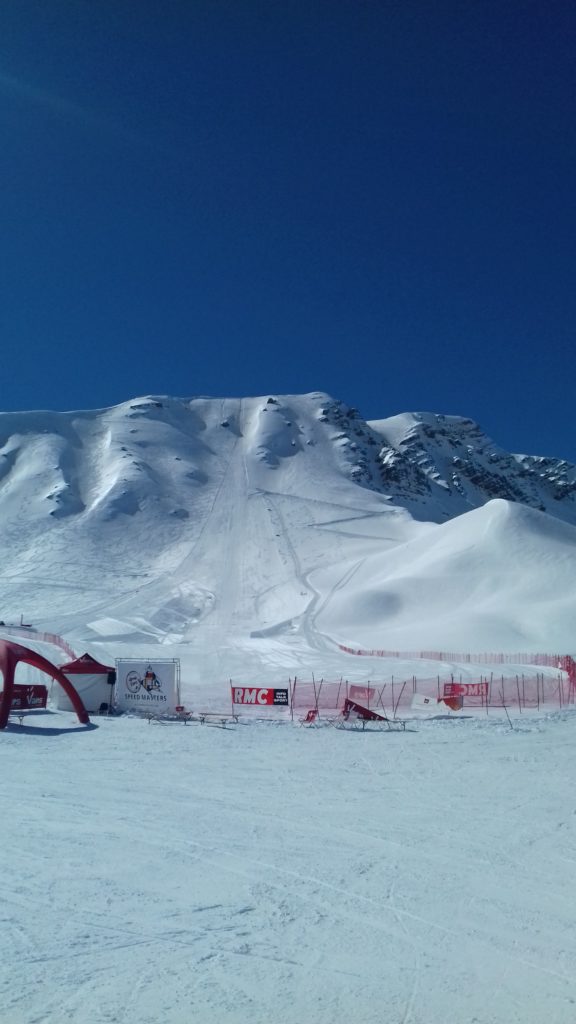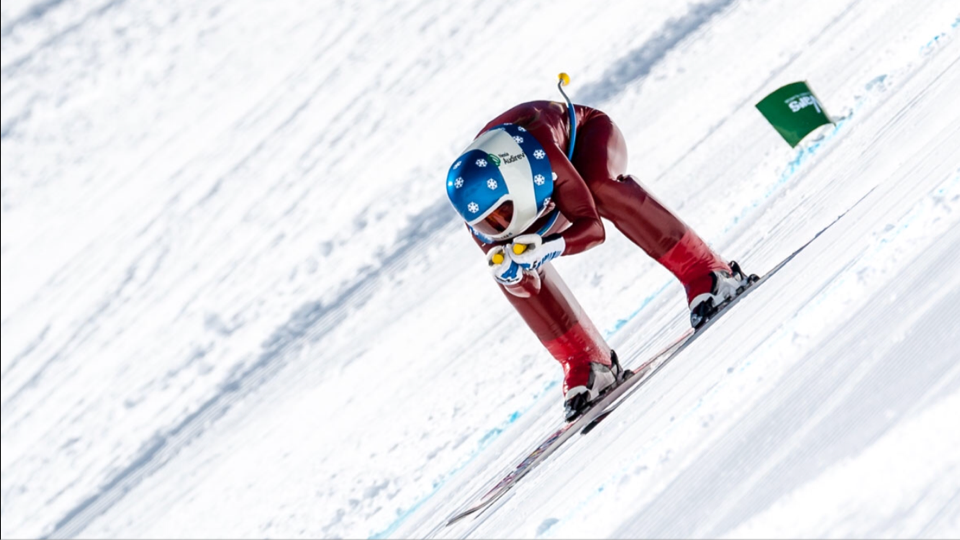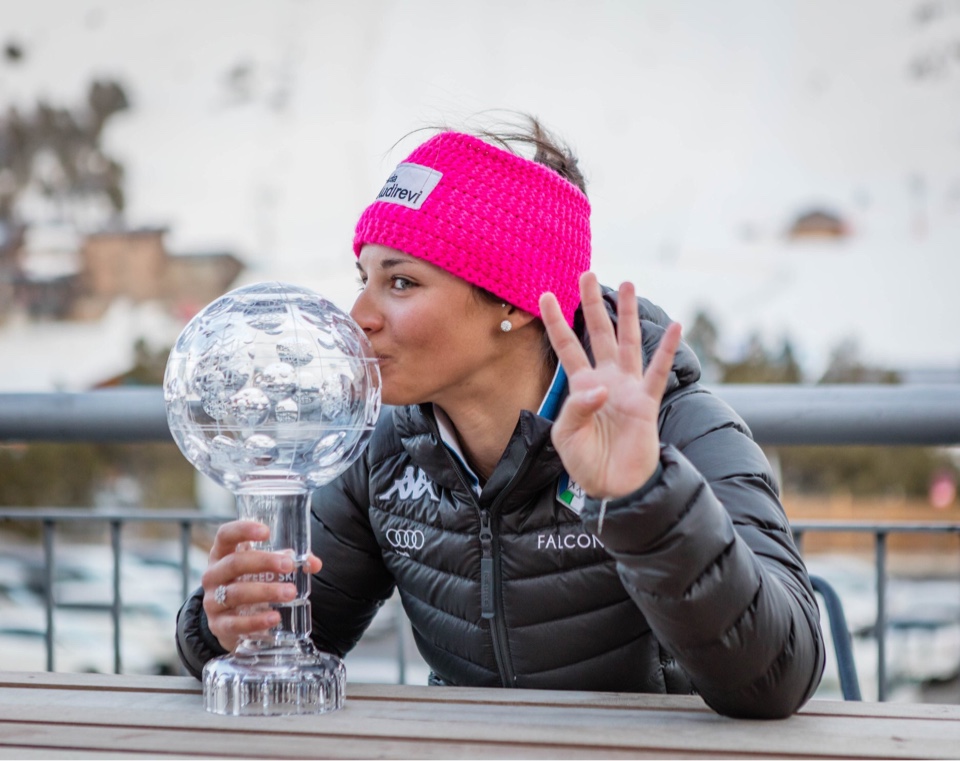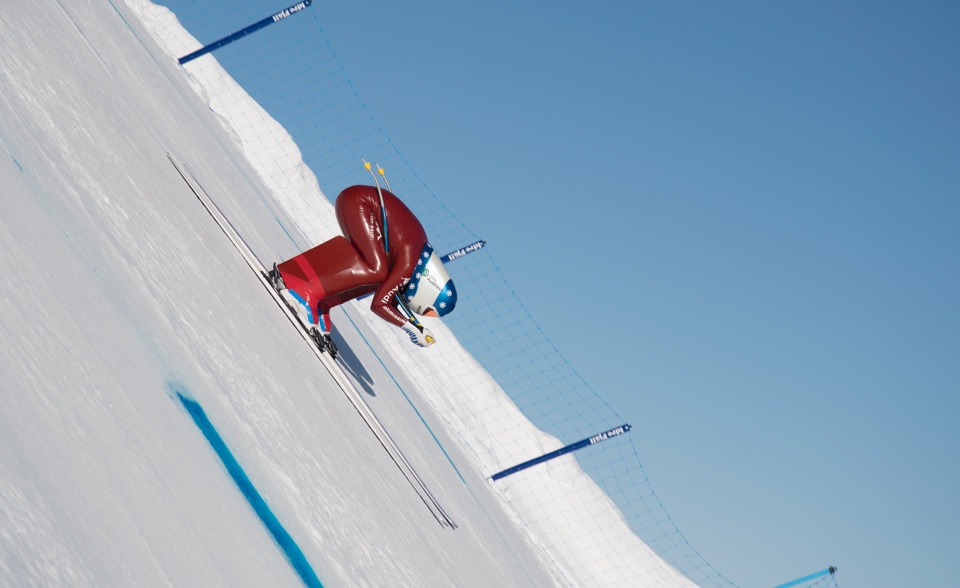What drives a person to clip on a pair of skis and point them down one of the steepest slopes in the world? What kind of person overcomes the dizzying fear that might paralyze lesser mortals, to focus solely on going faster than their competitors, to charge head first down a mountain at speeds in excess of 150mph?
Hanging in a chairlift over the ranks of snow-shrouded pines, it’s easy to see how La Foret Blanche – the French Alps ski domain comprising the resorts of Vars and Risoul – came to be named. Don’t ask me why this one should evoke the epitome of a white forest more than any other ski area (surely they all have trees and they all have snow?) but, somehow, it does. It’s peaceful here too, even in peak season. Certainly not devoid of skiers and boarders but sufficiently sprawling that the visiting throngs seem to dissolve into the 180km network of wide, rolling trails and expansive off-piste spreads.
Take a ride on the Mayt chairlift, which climbs through the centre of the resort, and to your left, emanating from the Pic de Chabrieres at 2750m, the quiet is occasionally broken by what at first might be a rush of wind, a rising howl that quickly swells to the crescendo of a closing jet plane and speaks of pure speed. Indeed the noise has me scanning the crystalline blue sky for a second or two, but then I spot it, on the almost sheer slope of Pic de Chabrieres: a small dot moving towards the bottom at increasing velocity. There’s another black speck at the top, and a little gathering of ant-size people at the bottom too.

They congregate every year at this time. They are the professional speed skiers and they come, wrapped in red latex and topped with smooth Darth Vader-esq helmets, to see who can clock the highest speed at the Vars Speed Masters tournament, the penultimate stop on the speed skiing World Cup circuit.
Since Vars is the fastest track on earth, much is made of the prospect of witnessing a run that will top the current world record of 254.958 km/h (158.424 mph) for men and 247.083 km/h (153.530 mph) for women. There are banners strung across the gateway to the resort, posters in the windows of ski hire shops and restaurants, flyers pasted inside the gondolas. Speed is everywhere. These men and women, we are urged to understand, are the fastest humans on the planet – a claim, surely, that requires some kind of qualifier: the fastest humans on skis I could go with; alright, perhaps even the fastest winter sports athletes. But the fastest at anything? The thing is, the assertion of that superlative is more literal than I realised, because speed skiing is the fastest non-motorised method of transportation there is. And ever since the year dot – or the year 1898 at any rate – when Californian Tommy Todd reported a speed of 87mph, men and women have been trying to get down vertiginous slopes at ever increasing velocities.
I was lucky enough to grab a few words from the lady of the moment, Valentina Greggio, who is the owner of the current world record and whose victories can’t be fit into one sentence without stopping to draw breath. Not only is she the fastest woman in the world at the aforementioned 247.083 km/h (153.530 mph) but Valentina has won gold at the World Championships of 2013, 2015 and 2017. And don’t think she went off the boil in the alternating years: the competition is only held every other year. Besides that she’s lifted the illustrious Crystal Globe at the Speed Skiing World Cup every year for the past four years.
Presumably, then, she is a happy lady.
She thanks me when I congratulate her on yet another successful year, adding, “I’m happy for my fourth Crystal Globe. If I think – just seven years ago, for me it would be something unthinkable!”

Valentina is referring to her evolution from regular alpine downhill, where she competed from 2007 to 2011, to SDH, and then S1, speed skiing.
A quick lesson for the uninitiated: SDH, or Speed Downhill, is a feeder class for the all important S1 category, the speed skiing equivalent of the Premier League (or Serie A out of respect to our subject today!) where everything suddenly gets a lot more serious – and a lot faster. In SDH the equipment used is exactly the same as that in alpine downhill. According to FIS rules, once a skier has competed in at least one SDH world cup season (actually SDH has now been rebranded S2 but let’s not complicate things) they are eligible to graduate to S1. That entails longer, specialised skis but also the famous polyurethane-coated suits, aerodynamic helmets and foam leg fairings that together combine to reduce drag and produce speed gains of up 50 km/h. Oh and incidentally, Valentina also holds the record in the SDH category of 202.576 km/h but hey, that’s ancient history.
Not that she isn’t one for reflection.
“I’m not very happy with my season,” she says, despite this year’s win, “because I had a hard time finding the good feeling. I’m never really happy, I always want to get better and better.”
At first I wonder if Valentina’s Italian-English has lost something of its context in translation, but the more I listen to her, the more this entity of feeling emerges:
“For me, it wasn’t a good race,” she tells me when I ask about her performance at Vars. (And yes, Valentina won that race, with a speed of 220.859 km/h). “I hadn’t got a good feeling. And so for me it was only a race trying to find the feeling and searching for the best setup.”
See what I mean about the feeling? And as I absorb her words I realise that with a sport purely centred on speed, where there is nothing to speak of regarding overtaking or turning, that feeling she talks about is speed. But for a speed skier, speed is a sensation beyond the rush of passing air that most of us are familiar with; it is the fine-tuned comprehension of velocity, an at-oneness with speed. If Valentina sounds like she’s referring to speed as a sentient companion, it’s an interpretation that’s proven to be worthwhile for her. Her results, after all, speak for themselves. And I think, perhaps, I understand a little of her relentless pursuit for perfection and yes, for the feeling.
Despite Valentina’s grounded opinion of her race at Vars though, she doesn’t underestimate the track’s attributes.
“Vars is special because it’s very steep in the first part. Whoever pilots the snow groomers,” she adds, “is super, and so the slope is incredibly fast. Not this year,” she points out, “but this year the problem was the snow.”

I can’t comment on the snow. For me and my top speed on the public slopes of a little over 60mph it felt just fine, but the pros like things a little smoother. I can see exactly what she means about that steep first sector though. Looking all the way to the top, the first 300m or so of the track, known as the launching area, towers wall-like above me. I wouldn’t go down it for all the money in the world. That being said, I might start from the half-way point where, here in Vars, your regular skiing public can try their hand at speed skiing. And that’s quite a notch on any amateur skiers belt, given that Vars is the fastest track in the world. In fact a quick delve into YouTube reveals that the other tracks – Sweden’s Idre Fjäll, Andorra’s Pas de la Casa, Canada’s Sun Peaks – are shallow, benign looking slopes by comparison, which explains why both the men’s and women’s world records were set here. Vars is a track that every speed skier focuses on because the world record is more than just being the fastest skier of a particular tournament – it’s about being the fastest skier ever. Given everything she’s accomplished, including a bulging trophy cabinet, I can’t help but wonder which is her most treasured landmark on skis.
“Certainly the world record,” she says without hesitating, confirming my suspicions. “The World Championships are every two years and someone wins it. The World Cup is every year – and someone wins it. But the world record…maybe every year it’s possible to try, but to beat it is not very simple,” she says, and to embed the point: “I beat the world record of Sanna [Swedish skier Sanna Tidstrand whose record of 242.59 km/h (150.73 mph) stood since 2006] after ten years.”
The record might have stood for more than a decade, but it took Valentina less than half as long in her vocation as a speed skier to break it. And at just 27 there are no signs of her easing off. Valentina is an unstoppable force in speed skiing for the present, and such is her dominance that it’s difficult to see her reign coming to an end in the near future. Listening to her, I find there’s something about her attitude towards speed skiing, a sort of congruence with the mountain and a synchronicity with speed that seems to have elevated her to such unparalleled success. As with so many world-class athletes though, Valentina’s introduction to her sport came in the twist of fate.
“I practiced alpine skiing since I was two years old. I heard about KL [Kilometro Lanciata or ‘flying kilometre’, an Italian term for speed skiing] and its champions like Pino Maynet, [Steve] McKinney and others, but my luck was that when I was nineteen year’s old the actual FISI Coach, Maurizio Cuccovillo, asked me If I would have a try. When I tried it, it was immediately love.”
It might have been love at first sight for Valentina, but in the broader sphere of winter sports speed skiing remains on the peripheries from a public awareness perspective. Having covered some of the pre-and post-Olympic action at Pyeongchang recently, it hasn’t escaped my attention that Valentina’s sport didn’t feature on the schedule. I wonder if that’s something that will change in future years.
“In 1992, in Albertville, it was a demonstration,” Valentina says, and after a little digging I discover that the Winter Olympics in France that year was marred by tragedy.
On the morning of the semi-finals, swiss speed skier Nicolas Bochatay was warming up on a public slope adjacent to the one used for the competition. Jumping a mogul, he crashed into a parked piste grooming vehicle which lay concealed behind it and died from the internal injuries he sustained. Despite the fact that the accident happened away from the speed run, its effect darkened the sport’s Olympic debut and perhaps finished it as an Olympic competition.
“I think that for us it is quite impossible to live the experience of the Olympic Games,” Valentina adds.
Perhaps, though, spectators just aren’t ready for speed skiing. I wonder if as watchers we prefer to see the shoulder to shoulder racing of ski and snowboard cross, the backside 900s of freestyle events, the twists and turns of downhill. Perhaps speed skiing is too pure, too refined; everything is stripped down to the one element and for those who don’t understand the essential requirements of a perfect run undertaken with perfect form and 100% concentration, that vital spectator appeal is left wanting. For those who comprehend the demands of speed skiing – and I’m just barely able to consider myself one of them now – it is the ultimate in competition. Perhaps it’s time for some greater exposure because this surely is racing in its most unalloyed form, and success comes from a degree of focus beyond that which you’ll find in many other winter sports.
But for an athlete for whom winning lies in a realm of sheer speed, at velocities more than double the national speed limit, how is the broader concept of success defined?
“I don’t know,” Valentina muses. “In my opinion success is achieving your own goals. Big success,” she concludes simply, “is winning everything.”
Big success then is one element Valentina can check off. She might sound like a woman constantly dissatisfied with her performances but seeing her in the competitors’ enclosure at Vars, I see an athlete who wears a perennial smile, who’s happened upon her ultimate vocation, who breathes her sport and is nourished by it the way you or I might be by sunlight. I see an athlete for whom satisfaction and happiness are too very different concepts. The former to be questioned and challenged at every point, the latter a cushion on which to nurture motivation.
And seeing Valentina the person, while also seeing the catalogue of her results, I realise that she might just have found a near-perfect life balance.

My grateful thanks to Valentina for stopping to talk to me. You can find out more about the world’s fastest woman at the following:
Website: www.valentinagreggio.it
Facebook: /valentina-greggio
Twitter: @greggioski
Instagram: @valegreg_speed

